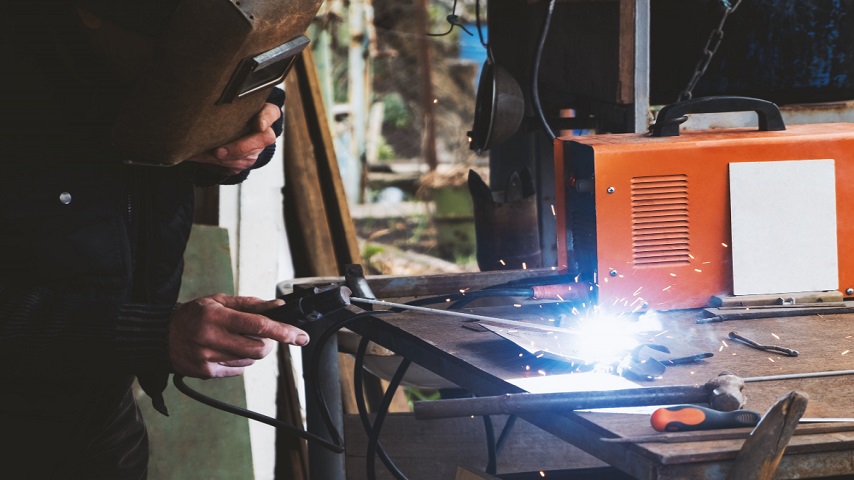Welding is a critical process in many industries, from construction and manufacturing to automotive and aerospace. The quality of the welding equipment used can significantly impact the quality of the welds, the efficiency of the welding process, and the safety of the operators. Selecting the right welding equipment is not just about choosing a machine; it involves understanding the specific needs of your projects and the capabilities of different welding machines. This article outlines the key factors to consider when choosing high-quality welding equipment.
1. Understanding Your Welding Requirements
Before selecting welding equipment, it’s essential to understand your specific welding requirements. Consider the following aspects:
- Type of Welding Process: Different welding processes—such as MIG (Metal Inert Gas), TIG (Tungsten Inert Gas), Stick welding (Shielded Metal Arc Welding), and Flux-Cored Arc Welding (FCAW)—require different types of equipment. Each process has its unique advantages and is suitable for specific applications. For instance, MIG welding is ideal for high-speed applications, while TIG welding offers precision for thin materials.
- Material Type and Thickness: The base materials to be welded (such as steel, aluminum, stainless steel, or cast iron) and their thickness will determine the type of welding machine and the power output required. Some machines are better suited for thicker materials, while others excel with thinner gauge metals.
- Welding Environment: The environment in which you will be welding also plays a significant role. For outdoor or fieldwork, a portable, lightweight welding machine that operates on a generator might be necessary. In contrast, for indoor, controlled environments, a stationary machine with higher output might be more appropriate.
2. Power Requirements and Duty Cycle
The power supply available and the required power output of the welding machine are crucial considerations:
- Input Power: Welding machines can be powered by different voltage inputs, such as 110V, 220V, or 460V. It’s essential to choose a machine compatible with the power supply at your work site. Additionally, consider whether you need a single-phase or three-phase machine, depending on the power availability and the size of the jobs.
- Duty Cycle: The duty cycle is the amount of time a welding machine can operate continuously before needing to cool down. A higher duty cycle is necessary for more extended, heavy-duty welding jobs, whereas a lower duty cycle might suffice for smaller, intermittent tasks. Choosing a machine with an appropriate duty cycle can prevent overheating and prolong the equipment’s lifespan.
3. Portability and Ease of Use
Depending on your specific needs, the portability and user-friendliness of the welding equipment can be significant factors:
- Portability: If your projects require frequent movement around a job site or between different locations, a lightweight, portable welding machine is ideal. Portable welders are typically smaller and more compact, making them easier to transport and maneuver in tight spaces.
- Ease of Use: User-friendly controls and intuitive interfaces are essential, especially if the equipment will be used by multiple operators with varying skill levels. Look for machines with clear digital displays, straightforward settings adjustments, and features like auto-set capabilities that simplify setup.
4. Quality, Durability, and Reliability
Investing in high-quality, durable, and reliable equipment is crucial for long-term performance:
- Build Quality: High-quality welding equipment is made from robust materials that can withstand the rigors of welding work, including exposure to heat, dust, and physical impact. Machines with a solid metal casing and reinforced components tend to be more durable.
- Brand Reputation: Consider equipment from reputable brands known for their quality and reliability. Established manufacturers often provide better customer support, warranties, and access to replacement parts, reducing downtime and maintenance costs.
- Safety Features: Safety is paramount in welding operations. Look for equipment with built-in safety features such as thermal overload protection, voltage fluctuation compensation, and automatic shut-off. These features help prevent accidents and protect both the operator and the equipment.
5. Accessories and Consumables
The availability and compatibility of accessories and consumables are also essential when choosing welding equipment:
- Compatibility with Accessories: Ensure the welding machine is compatible with necessary accessories like welding torches, clamps, ground leads, and gas regulators. Having the right accessories can enhance the machine’s versatility and efficiency.
- Consumable Availability: Welding requires consumables such as electrodes, welding wire, and shielding gas. Choose equipment for which consumables are readily available and cost-effective. This consideration is crucial for maintaining smooth operations and minimizing delays due to a lack of supplies.
6. Budget and Cost of Ownership
While it might be tempting to opt for the cheapest equipment available, consider the long-term cost of ownership:
- Initial Cost vs. Long-Term Value: While initial cost is a consideration, factor in the long-term value of the welding machine. Cheaper machines might have a lower upfront cost but could incur higher maintenance and repair costs over time. Investing in high-quality equipment might have a higher initial cost but offers greater reliability, durability, and efficiency in the long run.
- Energy Efficiency: Consider energy-efficient welding machines that consume less power and reduce operational costs. Over time, energy savings can contribute significantly to the overall cost of ownership.
Conclusion
Choosing the right welding equipment involves more than just selecting a machine; it requires careful consideration of your specific welding needs, the environment in which you will be working, and the quality and reliability of the equipment. By taking into account factors such as power requirements, portability, durability, and cost, you can ensure that you invest in equipment that will optimize your welding operations, enhance productivity, and provide long-term value. Always prioritize quality and safety to achieve the best results in your welding projects.


